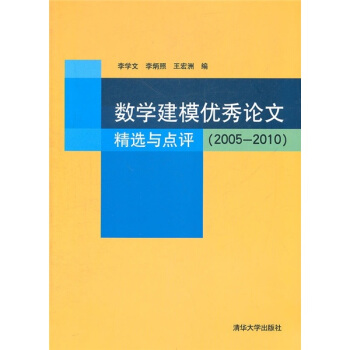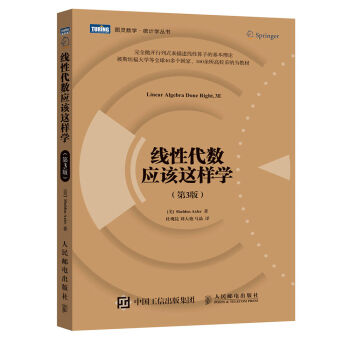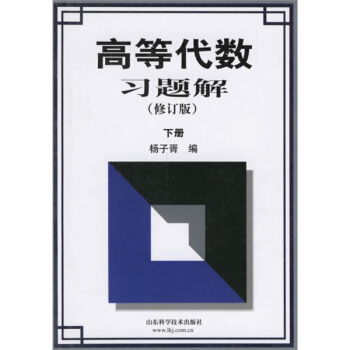![经典电动力学 (影印版)(第3版) [Classical Electrodynamics Third Edition]](https://pic.windowsfront.com/10002000/562f4bd4N45ed5b46.jpg)

具体描述
内容简介
《经典电动力学(影印版)(第3版)》是一本有着很高知名度的电动力学教材,长期以来被世界上多所大学选用。本影印版是2001年出版的第三版。与前两版相比,第三版在保留基本经典电动力学内容的基础上,做了不少调整。如增加了一些关于数字计算方面的内容;删除了等离子体一章,将其部分内容在其它章节体现;增加了一些新的科技发展内容,如光纤、半导体波导管、同步辐射等。全书共分16章,可作为物理类专业电动力学课程的教材,尤其适合开展双语教学的学校,对于有志出国深造的人员也是一本必不可少的参考书。
目录
Introduction and Survey 1I.1 Maxwell Equations in Vacuum, Fields, and Sources 2
I.2 Inverse Square Law, or the Mass of the Photon 5
I.3 Linear Superposition 9
I.4 Maxwell Equations in Macroscopic Media 13
I.5 Boundary Conditions at Interfaces Between Different Media 16
I.6 Some Remarks on Idealizations in Electromagnetism 19
References and Suggested Reading 22
Chapter 1 / Introduction to Electrostatics 24
1.1 Coulombs Law 24
1.2 Electric Field 24
1.3 Gausss Law 27
1.4 Differential Form of Gausss Law 28
1.5 Another Equation of Electrostatics and the Scalar Potential 29
1.6 Surface Distributions of Charges and Dipoles and Discontinuities in the Electric Field and Potential 31
1.7 Poisson and Laplace Equations 34
1.8 Greens Theorem 35
1.9 Uniqueness of the Solution with Dirichlet or Neumann Boundary Conditions 37
1.10 Formal Solution of Electrostatic Boundary-Value Problem with Green Function 38
1.11 Electrostatic Potential Energy and Energy Density; Capacitance 40
1.12 Variational Approach to the Solution of the Laplace and Poisson Equations 43
1.13 Relaxation Method for Two-Dimensional Electrostatic Problems 47
References and Suggested Reading 50
Problems 50
Chapter 2 / Boundary- Value Problems in Electrostatics: I 57
2.1 Method of Images 57
2.2 Point Charge in the Presence of a Grounded Conducting Sphere 58
2.3 Point Charge in the Presence of a Charged, Insulated, Conducting Sphere 60
2.4 Point Charge Near a Conducting Sphere at Fixed Potential 61
2.5 Conducting Sphere in a Uniform Electric Field by Method of Images 62
2.6 Green Function for the Sphere; General Solution for the Potential 64
2.7 Conducting Sphere with Hemispheres at-Different Potentials 65
2.8 Orthogonal Functions and Expansions 67
2.9 Separation of Variables; Laplace Equation in Rectangular Coordinates 70
2.10 A Two-Dimensional Potential Problem; Summation of Fourier Series 72
2.11 Fields and Charge Densities in Two-Dimensional Corners and Along Edges 75
2.12 Introduction to Finite Element Analysis for Electrostatics 79
References and Suggested Reading 84
Problems 85
Chapter 3/Boundary- Value Problems in Electrostatics: H 95
3.1 Laplace Equation in Spherical Coordinates 95
3.2 Legendre Equation and Legendre Polynomials 96
3.3 Boundary-Value Problems with Azimuthal Symmetry 101
3.4 Behavior of Fields in a Conical Hole or Near a Sharp Point 104
3.5 Associated Legendre Functions and the Spherical Harmonics Ylm(θ,φ) 107
3.6 Addition Theorem for Spherical Harmonics 110
3.7 Laplace Equation in Cylindrical Coordinates; Bessel Functions 111
3.8 Boundary-Value Problems in Cylindrical Coordinates 117
3.9 Expansion of Green Functions in Spherical Coordinates 119
3.10 Solution of Potential Problems with the Spherical Green Function Expansion 112
3.11 Expansion of Green Functions in Cylindrical Coordinates 125
3.12 Eigenfunction Expansions for Green Functions 127
3.13 Mixed Boundary Conditions, Conducting Plane with a Circular Hole 129
References and Suggested Reading 135
Problems 135
Chapter 4/ Multipoles, Electrostatics of Macroscopic Media,Dielectrics 145
4.1 Multipole Expansion 145
4.2 Multipole Expansion of the Energy of a Charge Distribution in an External Field 150
4.3 Elementary Treatment of Electrostatics with Ponderable Media 151
4.4 Boundary-Value Problems with Dielectrics 154
4.5 Molecular Polarizability and Electric Susceptibility 159
4.6 Models for Electric Polarizability 162
4.7 Electrostatic Energy in Dielectric Media 165
References and Suggested Reading 169
Problems 169
Chapter 5/Magnetostatics, Faradays Law, Quasi-Static Fields 174
5.1 Introduction and Definitions 174
5.2 Blot and Savart Law 175
5.3 Differential Equations of Magnetostatics and Amperes Law 178
5.4 Vector Potential 180
5.5 Vector Potential and Magnetic Induction for a Circular Current Loop 181
5.6 Magnetic Fields of a Localized Current Distribution, Magnetic Moment 184
5.7 Force and Torque on and Energy of a Localized Current Distribution in an External Magnetic Induction 188
5.8 Macroscopic Equations, Boundary Conditions on B and H 191
5.9 Methods of Solving Boundary-Value Problems in Magnetostatics 194
5.10 Uniformly Magnetized Sphere 198
5.11 Magnetized Sphere in an External Field; Permanent Magnets 199
5.12 Magnetic Shielding, Spherical Shell of Permeable Material in a Uniform Field 201
5.13 Effect of a Circular Hole in a Perfectly Conducting Plane with an Asymptotically Uniform Tangential Magnetic Field on One Side 203
5.14 Numerical Methods for Two-Dimensional Magnetic Fields 206
5.15 Faradays Law of Induction 208
5.16 Energy in the Magnetic Field 212
5.17 Energy and Self-and Mutual Inductances 215
5.18 Quasi-Static Magnetic Fields in Conductors; Eddy Currents; Magnetic Diffusion 218
References and Suggested Reading 223
Problems 225
Chapter 6 / Maxwell Equations, Macroscopic Electromagnetism, Conservation Laws 237
6.1 Maxwells Displacement Current; Maxwell Equations 237
6.2 Vector and Scalar Potentials 239
6.3 Gauge Transformations, Lorenz Gauge, Coulomb Gauge 240
6.4 Green Functions for the Wave Equation 243
6.5 Retarded Solutions for the Fields: Jefimenkos Generalizations of the Coulomb and Biot-Savart Laws; Heaviside-Feynman Expressions for Fields of Point Charge 246
6.6 Derivation of the Equations of Macroscopic Electromagnetism 248
6.7 Poyntings Theorem and Conservation of Energy and Momentum for a System of Charged Particles and Electromagnetic Fields 258
6.8 Poyntings Theorem in Linear Dissipative Media with Losses 262
6.9 Poyntings Theorem for Harmonic Fields; Field Definitions of Impedance and Admittance 264
6.10 Transformation Properties of Electromagnetic Fields and Sources Under Rotations, Spatial Reflections, and Time Reversal 267
6.11 On the Question of Magnetic Monopoles 273
6.12 Discussion of the Dirac Quantization Condition 275
6.13 Polarization Potentials (Hertz Vectors) 280
References and Suggested Reading 282
Problems 283
Chapter 7 / Plane Electromagnetic Waves and Wave Propagation 295
7.1 Plane Waves in a Nonconducting Medium 295
7.2 Linear and Circular Polarization; Stokes Parameters 299
7.3 Reflection and Refraction of Electromagnetic Waves at a Plane Interface Between Two Dielectrics 302
7.4 Polarization by Reflection, Total Internal Reflection; Goos-Hanchen Effect 306
7.5 Frequency Dispersion Characteristics of Dielectrics, Conductors, and Plasmas 309
7.6 Simplified Model of Propagation in the Ionosphere and Magnetosphere 316
7.7 Magnetohydrodynamic Waves 319
7.8 Superposition of ,Waves in One Dimension; Group Velocity 322
7.9 Illustration of the Spreading of a Pulse As It Propagates in a Dispersive Medium 326
7.10 Causality in the Connection Between D and E; Kramers-Kronig Relations 330
7.11 Arrival of a Signal After Propagation Through a Dispersive Medium 335
References and Suggested Reading 339
Problems 340
Chapter 8 / Waveguides, Resonant Cavities, and Optical Fibers 352
8.1 Fields at the Surface of and Within a Conductor 352
8.2 Cylindrical Cavities and Waveguides 356
8.3 Waveguides 359
8.4 Modes in a Rectangular Waveguide 361
8.5 Energy Flow and Attenuation in Waveguides 363
8.6 Perturbation of Boundary Conditions 366
8.7 Resonant Cavities 368
8.8 Power Losses in a Cavity; Q of a Cavity 371
8.9 Earth and Ionosphere as a Resonant Cavity: Schumann Resonances 374
8.10 Multimode Propagation in Optical Fibers 378
8.11 Modes in Dielectric Waveguides 385
8.12 Expansion in Normal Modes; Fields Generated by a Localized Source in a Hollow Metallic Guide 389
References and Suggested Reading 395
Problems 396
Chapter 9/Radiating Systems, Multipole Fields and Radiation 407
9.1 Fields and Radiation of a Localized Oscillating Source 407
9.2 Electric Dipole Fields and Radiation 410
9.3 Magnetic Dipole and Electric Quadrupole Fields 413
9.4 Center-Fed Linear Antenna 416
9.5 Multipole Expansion for Localized Source or Aperture in Waveguide 419
……
Chapter 10 / Scattering and Diffraction 456
Chapter 11/Special Theory of Relativity 514
Chapter 12/Dynamics of Relativistic Particles and Electromagnetic Fields 579
Chapter 13/Collisions, Energy Loss, and Scattering of Charged Particles,Cherenkov and Transition Radiation 624
Chapter 14/Radiation by Moving Charges 661
Chapter 15 / Bremsstrahlung, Method of Virtual Quanta,Radiative Beta Processes 708
Chapter 16 / Radiation Damping, Classical Models of Charged Particles 745
Appendix on Units and Dimensions 775
1 Units and Dimensions, Basic Units and Derived Units 775
2 Electromagnetic Units and Equations 777
3 Various Systems of Electromagnetic Units 779
4 Conversion of Equations and Amounts Between SI Units
and Gaussian Units 782
Bibliography 785
Index 791
前言/序言
It has been 36 years since the appearance of the first edition of this book, and 23 years since the second. Such intervals may be appropriate for a subject whose fundamental basis was completely established theoretically 134 years ago by Maxwell and experimentally 110 years ago by Hertz. Still, there are changes in emphasis and applications. This third edition attempts to address both withoutany significant increase in size. Inevitably, some topics present in the second edition had to be eliminated to make room for new material. One major omission is the chapter on plasma physics, although some pieces appear elsewhere. Readers who miss particular topics may, I hope, be able to avail themselves of the second edition.
The most visible change is the use of SI units in the first 10 chapters. Gaussian units are retained in the later chapters, since such units seem more suited to relativity and relativistic electrodynamics than SI. As a reminder of the sys- tem of units being employed, the running head on each left-hand page carries "——SI" or "——G" depending on the chapter.
My tardy adoption of the universally accepted SI system is a recognition that almost all undergraduate physics texts, as well as engineering books at all levels, employ SI units throughout. For many years Ed Purcell and I had a pact to support each other in the use of Gaussian units. Now I have betrayed him! Al- though this book is formally dedicated to the memory of my father, I dedicate this third edition informally to the memory of Edward Mills Purcell (1912-1997), a marvelous physicist with deep understanding, a great teacher, and a wonderful man.
用户评价
我必须承认,这本《经典电动力学(影印版)(第三版)》在我手中,更像是一件等待被发掘的珍贵艺术品,而非仅仅是一本教科书。从装帧的厚重感和纸张的质感来看,就能感受到它所承载的知识的份量。我之前接触过一些初步的电动力学概念,比如静电场和稳恒磁场,但总觉得它们是孤立的,缺乏一个宏观的统一理论。我非常期待在这本书中,能够看到麦克斯韦方程组是如何将电场和磁场融为一体,又是如何预言了电磁波的存在。我听说这本书对于一些经典实验的阐述也非常到位,比如法拉第的感应实验、赫兹的电磁波验证实验等,这些实验的细节和它们对理论发展的推动作用,往往比干巴巴的公式更能激发人的兴趣。我希望这本书能够帮助我理解光作为一种电磁波的本质,以及在不同介质中传播的特性。此外,书中关于相对论在电动力学中的应用,也让我倍感期待,这毕竟是现代物理学的重要基石之一。我期待在这本书的引领下,能够获得一种深刻的洞察力,不仅仅是记住公式,更能理解它们背后的物理原理和思想方法,从而在未来解决更复杂的问题。
评分收到这本《经典电动力学(影印版)(第三版)》后,我立刻就被它所传递出的那种严谨与深刻所吸引。虽然我不是物理学专业的学生,但我一直对那些能够解释世界运行基本规律的科学著作抱有极大的热情。这本书的版式设计简洁大气,印刷质量上乘,即使是影印版,也丝毫未影响阅读体验。我尤其对书中可能涉及的拉格朗日和哈密顿表述方式感到好奇,据我所知,这两种方法是描述经典力学和电动力学的重要工具,它们能够以一种更加优雅和普遍的方式来处理复杂的物理问题。我希望通过这本书,能够理解电动力学方程组背后更深层次的对称性和守恒律,以及它们是如何与能量、动量等基本概念相联系的。对于书中可能出现的梯度、散度和旋度等数学工具,我期待它能给予清晰的几何和物理解释,而不是仅仅作为抽象的数学符号出现。这本书对我来说,不仅仅是一本物理学教材,更是一次探索宇宙奥秘的智力冒险。我希望能在这本书的引导下,逐渐领悟到电磁现象的本质,并能够将这些知识应用到我感兴趣的某些工程领域,比如电磁兼容、无线通信等方面,寻找理论与实践的结合点。
评分当我拿到《经典电动力学(影印版)(第三版)》这本书时,一种敬畏感油然而生。这本书的厚度和其在物理学界的名声,都预示着这是一次深度学习的旅程。我目前主要的学习方向是微电子学,其中电磁场的知识是必不可少的。我希望能在这本书中找到关于电磁场在材料中行为的详细描述,例如介电常数、磁导率等物理量是如何影响电磁波的传播和衰减的,以及这些参数在实际半导体器件设计中的应用。我对书中可能涉及的边界条件和边界值问题特别感兴趣,因为在实际的工程应用中,我们经常需要处理各种复杂的几何形状和材料界面上的电磁场分布。我期待这本书能够提供一套系统性的方法来解决这类问题。同时,我也希望书中能够包含一些关于电磁场的能量密度和动量密度的讨论,以及它们在能量传递和动量交换过程中的作用。这本书对我来说,不只是一个知识的来源,更是一种学习方法的示范,它鼓励我去思考、去推导、去理解,而不是简单地记忆。
评分这本书简直就是物理学领域的圣经,我一直对电磁学有着浓厚的兴趣,但总是觉得难以深入。这次入手了这本《经典电动力学(影印版)(第三版)》,虽然还没来得及细细研读,但仅仅翻阅目录和一些章节的开头,就立刻被它严谨的逻辑和宏大的体系所折服。书的纸张质量非常好,影印的清晰度也令人满意,拿在手里沉甸甸的,充满了学术的厚重感。我特别期待它在介绍电场、磁场及其相互作用时,能够梳理出清晰的脉络,让我理解从最基础的麦克斯韦方程组到更复杂的电磁波传播、辐射等现象的推导过程。我曾在网上看过一些关于这本书的介绍,据说它在理论推导上极其详尽,对于每一个公式的来源和意义都有深入的阐释,这正是我所需要的。我希望通过阅读这本书,能够建立起一个完整且扎实的电动力学知识体系,为我后续学习固体物理、量子力学等更高级的物理课程打下坚实的基础。这本书的价值,我想无需多言,对于任何一个想要深入理解电磁学世界的物理爱好者或学生来说,都是一本不可多得的宝藏。我迫不及待地想沉浸其中,与这位物理学巨匠进行一场跨越时空的思想对话。
评分手握这本《经典电动力学(影印版)(第三版)》,我仿佛触碰到了物理学殿堂的基石。我一直对宇宙中的各种力充满好奇,而电磁力无疑是最为普遍和重要的。这本书的影印质量非常出色,阅读起来毫无障碍,其内容丰富程度可见一斑。我非常期待书中对电磁波的产生、传播和相互作用的详尽讲解,特别是关于辐射理论的部分,比如偶极辐射、四极辐射等,这些概念对于理解天体物理现象和通信技术都至关重要。我也对书中可能涉及的非线性电动力学现象感到好奇,虽然这可能超出经典范畴,但了解其基本原理对我开阔视野很有帮助。此外,我希望书中能够包含一些关于电磁场与物质相互作用的深入探讨,比如在等离子体中的传播特性,或者在强磁场下的表现。这本书的价值不仅在于它提供了理论知识,更在于它塑造了一种严谨的科学思维方式。我期待通过对这本书的学习,能够提升我的分析问题和解决问题的能力,并在未来将这些知识融会贯通,应用于更广阔的科学研究领域。
评分印刷质量看起来非常不错
评分经典,电动力学最著名的书
评分专业性很强,原版书风格和国内教材完全不一样。对相关专业同学来说是本好书。比在其他网上买的影印版的书质量好。
评分经典电磁学教材 值得推荐 纸张一般
评分Jackson的这本书是数学多物理少,准备买了下学期读研究生用的,假期翻了翻也看不下去
评分正版图书送货及时十分满意
评分很喜欢,第二次购买了,送人很好,也许还有有第三次。
评分内容专业经典很好质量不错
评分封面都是灰,其它还行
相关图书
本站所有内容均为互联网搜索引擎提供的公开搜索信息,本站不存储任何数据与内容,任何内容与数据均与本站无关,如有需要请联系相关搜索引擎包括但不限于百度,google,bing,sogou 等
© 2025 book.coffeedeals.club All Rights Reserved. 静流书站 版权所有

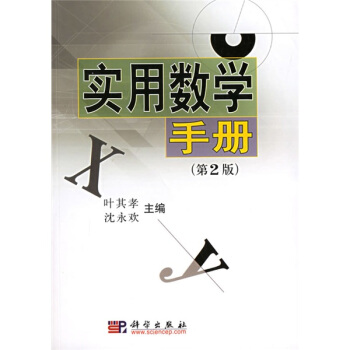
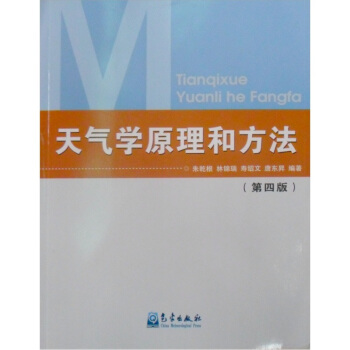
![世界名著典藏系列:物种起源(英文全本) [On the Origin of the Species] pdf epub mobi 电子书 下载](https://pic.windowsfront.com/10405842/rBEDik_RuhMIAAAAAAD65baaIY8AAAfkgB4xvwAAPr9638.jpg)

![光物理研究前沿系列:超快光学研究前沿 [Advances in Ultrafast Optics] pdf epub mobi 电子书 下载](https://pic.windowsfront.com/11664586/550fcadcN2bf38a3f.jpg)


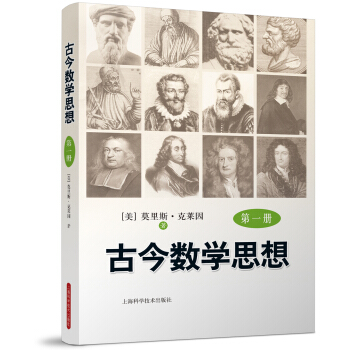
![光物理研究前沿系列:凝聚态光学研究前沿 [Advances in Condensed Matter Optics] pdf epub mobi 电子书 下载](https://pic.windowsfront.com/11625273/5513534aN4a502add.jpg)


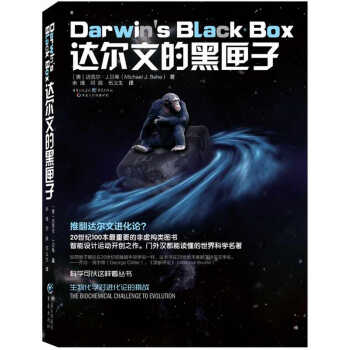

![有机合成实验室手册(原著第22版) [Organikun] pdf epub mobi 电子书 下载](https://pic.windowsfront.com/10145711/0fbfb7d7-089e-4c34-a039-11819427ca8e.jpg)


